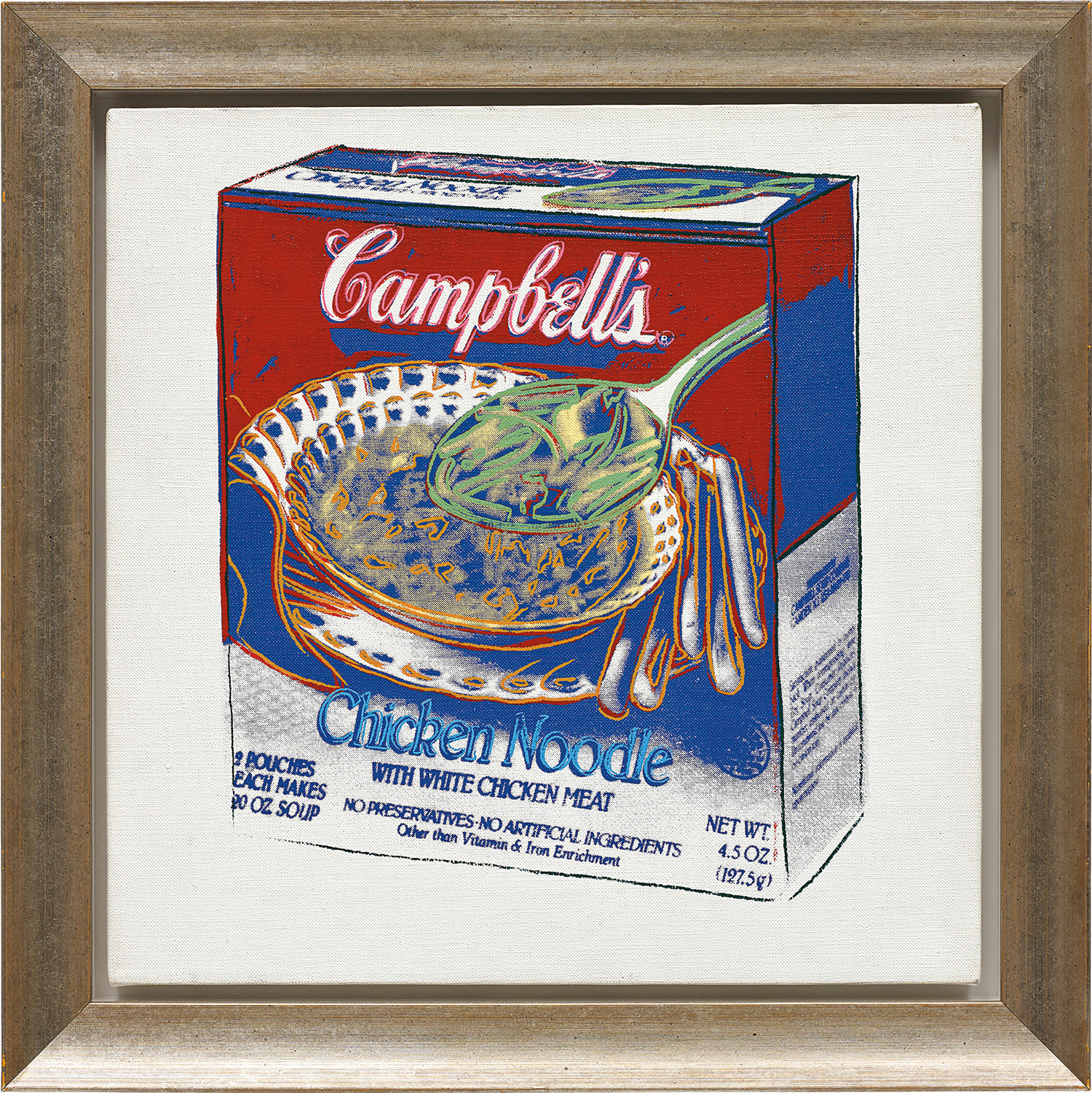



150
Andy Warhol
Campbell’s Chicken Noodle Soup Box
Full-Cataloguing
In the early 1960s, Warhol transitioned from a commercial fashion illustrator to a revered, hugely successful artist. The spark to this meteoric rise to fame can be pinpointed to Warhol’s first west coast solo exhibition at the Ferus Gallery in 1962, where he exhibited Campbell’s Soup Cans: Warhol’s first pictorial series, at a time when its logo was emblazoned on every street corner and magazine in America. The work comprised of 32 individually painted canvases depicting differing varieties of canned soup is now housed in the collection of the Museum of Modern Art, New York. The idea is said to have been born through a dinner conversation with friend and gallerist Muriel Latow, who suggested 'You should paint something that everybody sees every day, that everybody recognizes... like a can of soup' (Muriel Latow, quoted in Gary Indiana, Andy Warhol and the Can That Sold the World, New York, 2010, p. 82). Warhol allegedly proceeded to purchase every type of soup offered by the brand and meticulously recreated them. Initially strongly dividing his critics, Warhol’s exhibition is heralded as contributing to the birth of Pop Art in America. Arguably Warhol’s most recognisable subject, the Campbell’s brand is and one that the artist repeatedly returned to over the next two decades.
In contrast to the earlier outrage caused by Warhol’s promotion of everyday household products to fine art objects, in 1985, Warhol was commissioned by Campbell’s to produce a series of paintings of their dry-mixed soups. Warhol’s methods of serial production and the naming of his studio ‘The Factory’ placed his artistic identity as firmly at odds with the historic and romantic notion of The Artist as a lonely creative individual defined by his or her rejection of socially established norms and conventions.
Warhol’s serial technique is often hailed merely as triumphant reaction to mass-produced copy. However, the artist’s late works in particular demonstrate his visual variations as products of his individual strategy. Unlike commercial images, where image selection precedes its mass production, Warhol reproduces a series of unique variations on the same image, altering colours and also in his late works adding depth and additional outlines. The present Campbell’s Chicken Noodle Soup Box encompasses both the subject matter that launched Warhol’s career and also the stylistic elements central to his later creative oeuvre. Reflecting on his career, Warhol stated 'I should have done the Campbell’s Soups and kept doing them' (Andy Warhol, quoted in Benjamin H. D. Buchloh, ‘Andy Warhol’s One-Dimensional Art: 1956–1966’, Hal Foster and Gordon Hughes, eds., October Files, London, 2001, p. 30).
Andy Warhol
American | B. 1928 D. 1987Andy Warhol was the leading exponent of the Pop Art movement in the U.S. in the 1960s. Following an early career as a commercial illustrator, Warhol achieved fame with his revolutionary series of silkscreened prints and paintings of familiar objects, such as Campbell's soup tins, and celebrities, such as Marilyn Monroe. Obsessed with popular culture, celebrity and advertising, Warhol created his slick, seemingly mass-produced images of everyday subject matter from his famed Factory studio in New York City. His use of mechanical methods of reproduction, notably the commercial technique of silk screening, wholly revolutionized art-making.
Working as an artist, but also director and producer, Warhol produced a number of avant-garde films in addition to managing the experimental rock band The Velvet Underground and founding Interview magazine. A central figure in the New York art scene until his untimely death in 1987, Warhol was notably also a mentor to such artists as Keith Haring and Jean-Michel Basquiat.